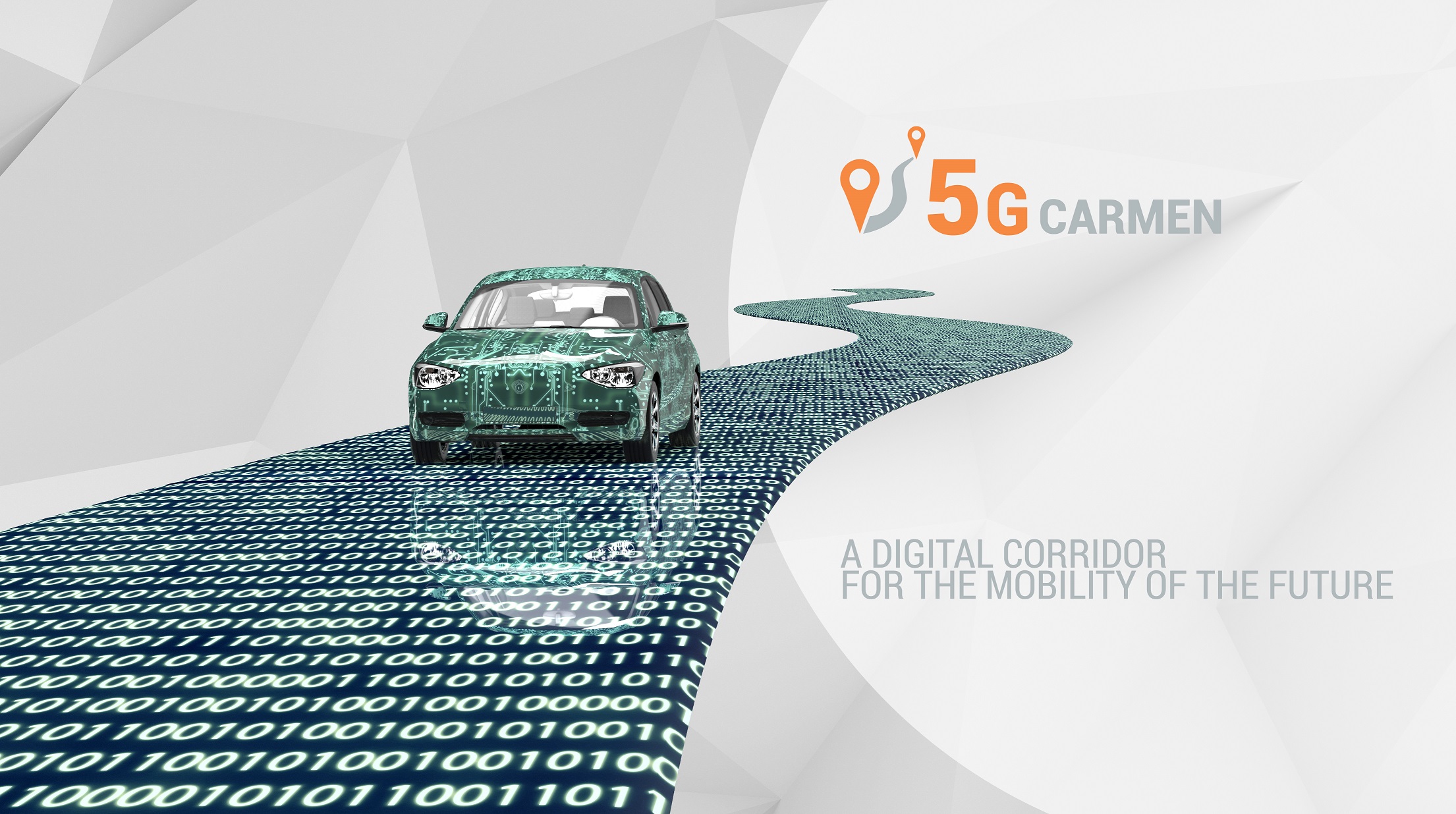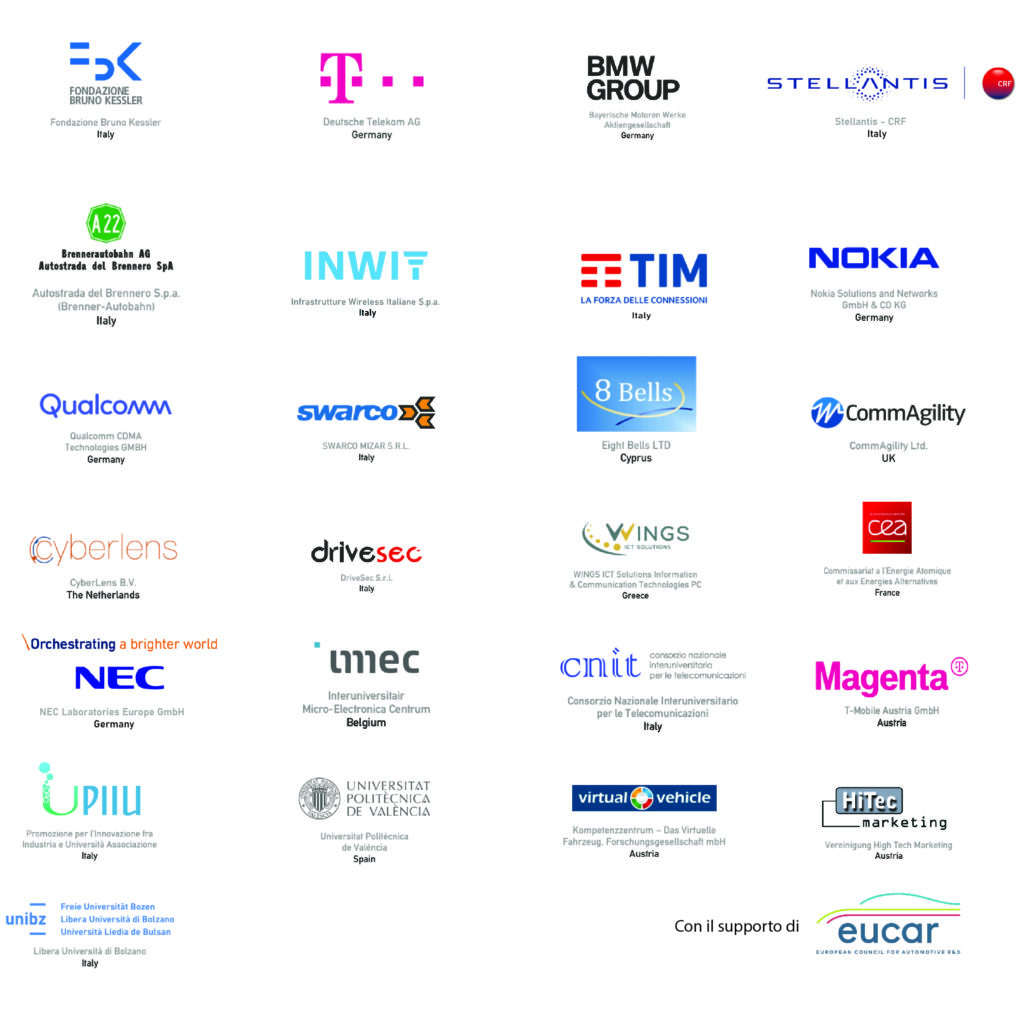5G: CONNECTED AUTONOMOUS AND ASSISTED DRIVING VEHICLES ON MOTORWAY BETWEEN ITALY-AUSTRIA AND AUSTRIA-GERMANY

5G-CARMEN European project tests innovative automotive functions and services across countries
The 5G-CARMEN project, funded by the European Commission and coordinated by the Bruno Kessler Foundation, today demonstrated the outcomes of an autonomous driving pilot that connected low latency, autonomous and assisted driving vehicle functions using a 5G mobile network.
Thanks to 5G connectivity and the Edge Computing infrastructure deployed by the project’s network operators TIM, Magenta and Deutsche Telekom, as well as by technology participants such as Nokia, Qualcomm Technologies, Inc., NEC Laboratories Europe and INWIT, and thanks to the cooperation with the road operator A22 Autostrada del Brennero SpA, innovative vehicle automated functions were developed leveraging 5G as a sensor of the traffic environment to extend the capabilities of vehicle automation from SAE Level 2 up to 4. Tests have been conducted not only within each country, but particularly across the borders from Italy to Austria and Austria to Germany. Cross-border scenarios are challenging for 5G networks: 5G-CARMEN showcased smooth service continuity for all drivers moving from one country to another, providing roaming connectivity to the users with the same level of service quality granted to users connected to their home networks. Moreover, 5G service continuity for cars driving along the corridor has also been coordinated by Edge Computing platforms.
Two Stellantis-CRF vehicles demonstrated the ability to perform cooperative lane manoeuvres and lane changes using connected, assisted and automated driving along the 5G corridor and at the borders between Italy-Austria and Austria-Germany (Brenner, Kufstein). Cooperative manoeuvres are enabled by an extended perception of the vehicle, sharing speed and position of the vehicle itself and of the other vehicles, that are monitored by the on-board sensors. Data sharing with surrounding vehicles takes place thanks to the 5G cellular network and also to the C-V2X direct communication.
A centralized connected and automated lane change is also tested in the Kufstein border between Germany and Austria. Three BMW vehicles sent their position, speed and intention of a lane change manoeuvre via a 5G network to a BMW Manoeuvring Service which monitors the state of the traffic, manages the distance between vehicles, generates recommended speed for all of them and determines the most suitable moment to execute a lane change (when requested).
“The 5G-CARMEN project represents a milestone for the evolution of connected and automated vehicles – says Matteo Gerosa, 5G-CARMEN project coordinator – Fondazione Bruno Kessler is very proud to lead this important Consortium, to which the European Commission has entrusted the task of implementing one of the main digital 5G corridors for the future of smart mobility. The real added value of 5G-CARMEN project has been the synergy and the competences put into the system: companies and research centers have been working side by side for the construction and development of the new business scenario for the future ecosystem of digital mobility and intelligent transport system enabled by 5G connectivity and Edge-Cloud infrastructure”.
